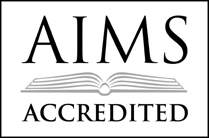Four MILTON Sixth Graders Win Awards at DC STEM Fair
March 23, 2018 by
Four MILTON sixth graders were awarded top prizes in the Junior Division (Grades 6 to 8) at this year’s DC STEM Fair! The DC STEM Fair is the premier science event for students in Grades 6 to 12 who attend independent and public schools in the nation’s capital. Sixth graders Shoshana L. and Reut S. won first place for their projects in the categories of Physical Energy and Biomedical & Health Sciences, respectively. Sixth graders Gabriella K. and Adi M. won second place for their projects in the categories of Physical Energy and Chemical Energy, respectively. We also want to congratulate Rachel R., whose project was selected by the fair for competition in the category of Physical Energy. And kudos to alumni student Sam L. (’13) on his awards in the Senior Division, including first place in the category of Physical Energy, third place in the overall Grand Awards, and four special awards. Over the past three years, MILTON/JPDS-NC students and alumni have won numerous first place, second place, and honorable mention awards at the DC STEM Fair.
Each year, MILTON sixth graders design inquiry projects to test a question of their choice. They are encouraged to find a testable question and design an experiment with measurable results. The students learn to conduct experiments with multiple trials, and work to design precise measuring techniques and eliminate as much human error as possible. Throughout the process, they often encounter challenges that require them to rethink, redesign, and retest. In this way, the inquiry projects highlight the students’ critical thinking, perseverance, and problem-solving skills, in addition to helping them better understand the world. Read more about the students’ projects that were selected to compete in the DC STEM Fair below:
About the Projects
Gabriella K. investigated how the height of a ball bouncing is affected by the temperature of the ball. She designed her experiment with a strong methodological approach and high precision in observation. Gabriella measured each ball’s temperature before dropping it from a fixed height, and recorded the height of its bounce using a high-speed camera. In observing a large number of bounces at each of three fixed temperatures, she was able to create a sizable data set for statistical analysis. Gabriella found that the height of a ball’s bounce was highly dependent on the internal pressure of the gas contained within the ball. Her research led her to the ideal gas law, which states that when volume is constant, the pressure of a gas is directly proportional to the temperature of that gas.
Shoshana L.‘s inquiry project explored the thermodynamics of ice melting. First she altered the geometry of ice cubes to achieve a variety of different surface areas while keeping a constant volume. She then moved the ice to room temperature and observed the rate of melt water production. Through her experiment, Shoshana found that the higher the ratio of surface area to volume, the greater the rate of melt. Shoshana’s research led her to learn more about what happens on the molecular level as water freezes and melts, as well as energy transfer between a solid and surrounding gas.
Adi M. designed an experiment to investigate how changing the concentration of an electrolyte in a battery affects the production of voltage. In fifth grade, MILTON students have a unit on energy and electricity, where they construct different circuits and investigate current and voltage. Curious to learn more about how batteries work, sixth grader Adi constructed working batteries using activated charcoal, salt water, and aluminum foil, and hypothesized that by increasing the amount of salt in solution, the batteries would be able to produce a larger voltage. However, after conducting a first round of experimentation, her data showed a decrease in voltage with an increase in salinity. Because this did not match her anticipated results and her understanding of batteries developed through background research, she decided to perform a second round of testing at different concentrations. Through testing the charcoal battery through a broader range of salinity, she discovered that voltage production increased until a certain level of salinity, reached a peak, and then fell again. When asked to identify whether there was a positive or negative correlation between her independent and dependent variables, she was able to use this expanded test results to show that there was a non-linear relationship.
Rachel R. was curious about how sound travels through media, and conducted an experiment to determine the effect of insulation in reducing noise. Using computer speakers, a decibel meter, and plastic containers to serve as barriers, she measure the insulating effect of an increasing number of barriers. Rachel found that large container bottoms did not reduce the transfer of sound on their own, but that increasing the number of containers with lids did reduce the transfer of sound. After analyzing her data and gaining a better understanding of the mechanics involved in the setup of her experiment, Rachel understood that she had directly measured the vibrations of the plastic containers and lids using the decibel meter, instead of measuring the vibrations of the air on the opposite side of the speaker. Rachel theorized that the larger container bottoms had acted as resonating bodies, transferring the vibrations in the air more effectively to the decibel meter. With less contact between each of the lids, she found that there was less energy transfer between the lids than the containers.
Reut S. was interested in osteoporosis and how the changing density of bones affects their strength. After conducting background research, she decided to use vinegar to leach calcium from chicken bones to use as a model for the depletion of calcium in human bones through osteoporosis. Reut’s preparations for her experiment began at the completion of her family’s dinner, when she collected chicken bones for analysis. She carefully measured the mass and volume of each of the bones, then subjected them to a vinegar bath for increasing amounts of time. Reut tested the force required to break the bones by holding them horizontally and suspending weight from the middle of the bone, then slowly increasing the weight until the bones broke. During her project, Reut identified different types of bone breaks and forces that might damage a bone, but was only able to test one type of force. She is curious how compression and impact might have acted on the bones, in comparison with her selected testing method.






